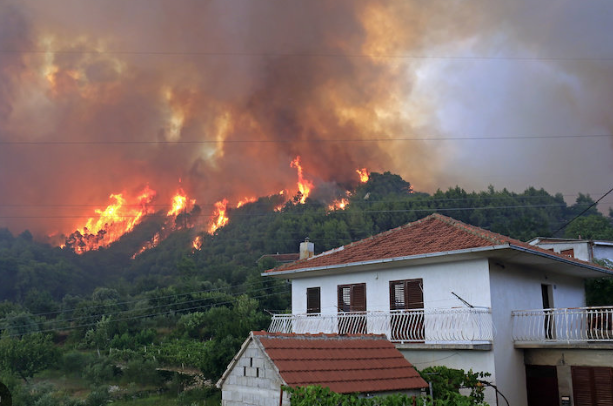Wildfires can be devastating, especially for those of us who live in fire-prone areas. While we can’t always control the path of a wildfire, we can take steps to protect our homes — starting from the top down. Your roof is one of the most vulnerable parts of your home, but with some proactive measures, you can significantly reduce the risk of damage. Here’s how:
1. Choose Fire-Resistant Roofing Materials
If you’re in the market for a new roof or planning a remodel, prioritize fire-resistant materials. Options like metal, slate, tile, or asphalt shingles with a Class A fire rating can withstand high heat and resist flames. Avoid wood shingles or shakes, as they are highly flammable.
2. Maintain a Clean Roof
Embers from wildfires can travel miles, and if they land on your roof, accumulated debris like leaves, pine needles, or twigs can act as kindling. Regularly clean your roof and gutters to keep them free of flammable material. Make it a habit, especially during wildfire season.
3. Install Gutter Guards
Gutter guards can prevent debris buildup and make cleaning easier. By keeping gutters clear, you reduce the chances of embers igniting trapped leaves or twigs along your roofline.
4. Create Defensible Space Around Your Home
Defensible space is the buffer zone you create by clearing flammable vegetation and other materials around your property. Trim back trees and shrubs, especially those close to your roof, and maintain at least a 10-foot clearance between tree branches and your home.
5. Upgrade Vent Covers
Roof vents are necessary for ventilation, but they can also provide an entry point for embers. Replace standard vent covers with metal mesh screens that have openings no larger than 1/8 inch. These screens can help block embers while maintaining airflow.
6. Apply Fire Retardant Treatments
There are fire retardant sprays available for roofs that can provide an extra layer of protection. While these treatments aren’t a permanent solution, they can be a helpful precaution during high-risk periods.
7. Install a Sprinkler System
Roof-mounted sprinkler systems can help wet your roof and surrounding area during a wildfire, reducing the chance of ignition. While this is a more expensive option, it’s worth considering if you live in an area with frequent wildfire activity.
8. Inspect Your Roof Regularly
Routine inspections can help you spot vulnerabilities like cracked tiles, missing shingles, or gaps that embers could exploit. Address any issues promptly to keep your roof in optimal condition.
9. Keep Emergency Supplies on Hand
While not directly related to your roof, having emergency supplies like fire extinguishers, hoses, and ladders readily available can help you act quickly if embers land on your property.
10. Stay Informed and Have a Plan
Sign up for local wildfire alerts and know your evacuation routes. Even the best-prepared homes can’t withstand every wildfire, so prioritize your safety and be ready to leave if necessary.
Final Thoughts
Protecting your roof during a wildfire is about preparation and vigilance. By taking these steps, you can reduce the risk of damage and buy valuable time for firefighters to protect your home. And remember, while safeguarding your property is important, nothing is more valuable than your life and the lives of your loved ones. Stay safe out there!

